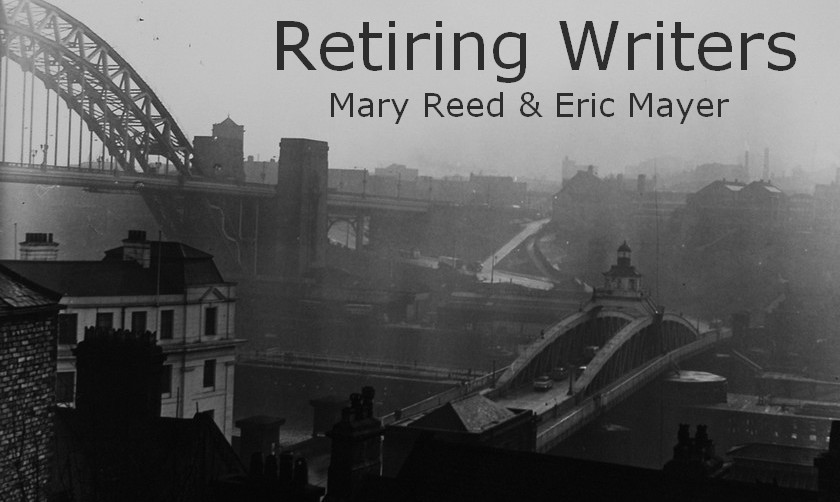The coke-bottle windows of Maywrite Towers currently disclose a view of frozen snow and bare branches lying under that unnatural hush a blanket of snow brings, and with overnight temperatures forecast to fall into the teens the buggy will not be off to town for a few days. Another storm arriving in the near future is expected to leave several more inches of snow, but early forecasts have not addressed whether or not a white Christmas may be expected.
When we think of Christmas, apart from snow, what springs to mind? Carols, crackers of the pull-and-bang persuasion, and cards -- and in the British tradition the telling of ghost stories on Christmas night. As I have observed elsewhere, whatever the weather without, by authorial design there is something unsettling about blinding flashes of lightning revealing changes in the positions of the figures in ancestral portraits or the appearance of oddly mottled and claw-like hands scratching at diamond-paned casements in the aptly named dead of night. And while crashing rolls of thunder may drown out the screams of the doomed innocent in the locked attic, it never seems to mask the grim sound of the approaching coach and four driven by the dissolute and long deceased fourth earl, inevitably arriving at the front door on the stroke of midnight though not with the intention of delivering pizza.
As to ghost stories, let me suggest -- no, I insist -- a wonderful yarn just right for keeping up the afore-mentioned tradition: The Mezzotint by M. R. James
As the story opens Mr Williams, who presides over a university art museum, is considering the purchase of the titular mezzotint, described by the dealer thus: "978.—Unknown. Interesting mezzotint: View of a manor-house, early part of the century. 15 by 10 inches; black frame. £2 2s."
On its arrival at Mr Williams' college rooms for examination, unlike the more traditional and indeed oft times expected setting for this type of fiction, the manor-house concerned is not depicted as an overgrown ruin with ivy shrouding the few remnants of its walls, broken statues reclining in knee-high grass, the family vault within sight of the back door, and a lake half choked with sickly vegetation. Instead the building is almost boring in its details, the mezzotint depicting "a full-face view of a not very large manor-house of the last century, with three rows of plain sashed windows with rusticated masonry about them, a parapet with balls or vases at the angles, and a small portico in the centre. On either side were trees, and in front a considerable expanse of lawn."
Mr Williams doesn't think much of the mezzotint or the price asked for it and intends to send it back to the dealer. However, he first decides to attempt to identify the manor-house. Aided by a couple of words on the remains of a label on the back of the mezzotint, —ngley Hall and —ssex, he and two friends consult gazetteers and guide-books and it is Mr Williams who traces the mysterious house.
Unfortunately, after a series of events involving the mezzotint the solving of the mystery of its location leads to a chilling conclusion, all the more awful because a possible solution to these occurrences suggested in the narration has to be correct.
It is the understated nature of the horror in James' ghost story that I really admire. But occasionally a reader's goosebumps are created for a more personal reason. I shall not name the short story in question but on reading it I was set back more than somewhat when I came across the name of a close friend on a suicide's tombstone, a vital clue to the explanation of the supernatural event involved.
The Mezzotint appears in James' collection Ghost Stories of an Antiquary:
I intend to reread it for the umpteenth time on Christmas night to keep up the fine old tradition.

No comments:
Post a Comment